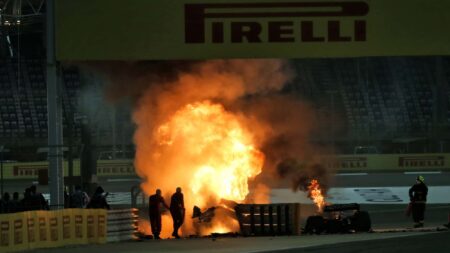But while there were no injuries reported under his suit, the Frenchman did suffer second-degree burns on his hands. He described seeing his gloves turn black as he lifted them out of the car and into the flames.
It’s a sobering reminder that no clothing can offer protection from fire for long, but also an example of the compromises that have to be made to ensure drivers are fast, as well as safe.
“The glove is the only element where there’s one layer of protection, says Christopher Hillard, a spokesman for Alpinestars, which makes Grosjean’s Hypertech V2 racing suit. “Drivers need to feel the steering wheel.”
Racewear is tested by measuring the time it takes for the temperature at the inner layer to rise by 24C when the outer layer is exposed to a block heated to almost 1000C.
For gloves, the minimum heat transfer standard is eight seconds, under the latest regulations. Racesuits must now resist the heat of a fire for at least 12 seconds — up from the previous 11. From this year, underwear must resist heat transfer too — for at least five seconds.




